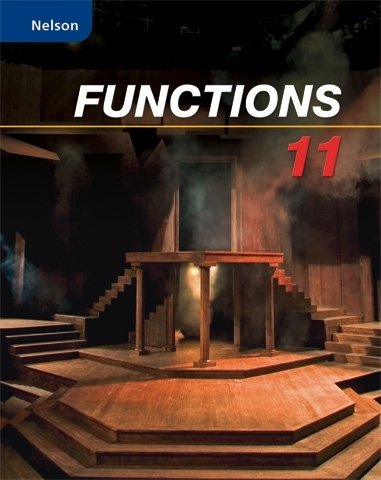
All Solutions
Page 344: Getting Started
$R(x)=(30-2x)(100+20x)$
price per T-shirt = $30 – 2x$
number of T-shirt sold = $100+20x$
Consider the revenue function,
$R(x)=(30-2x)(100+20x)$
where $R(x)$ is the revenue and $x$ is the number of times at which the price is reduced. Remember that revenue is the product of the T-shirt price and the total number of T-shirt sold. Practically, if the price is reduced, the quantity of T-shirt sold will increase while the price of each shirt will decrease.
This implies that,
$30-2x=0$ or $100+2x=0$
$x=15$ or $x=-5$
Since the number of times can only take positive values, we shall discard the negative value
$x=15$ times
begin{tabular}{|c|c|}
hline
begin{tabular}[c]{@{}c@{}}Number of \ Price Reductionend{tabular} & begin{tabular}[c]{@{}c@{}}Revenue (in dollars)\ $R(x)=(30-2x)(100+2x)$end{tabular} \ hline
0 & 3000 \ hline
1 & 3360 \ hline
2 & 3540 \ hline
3 & 3840 \ hline
4 & 3960 \ hline
5 & 4000 \ hline
6 & 3960 \ hline
7 & 3840 \ hline
end{tabular}
end{table}
Notice that after the fifth reduction, the maximum revenue was achieved and then the revenue decreases on further price reduction.
$;;;;;;;=30-2(5)$
price per T-shirt = 20 dollars
$=100+20(5)$]
number of T-shirt sold = 200 T-shirts
Initially the puck is at the starting point (distance =0), then at 0.25 s, it has traveled 180 cm to reach the opposite end. Since its speed is constant, it shall go back at 0.50s. It has therefore traveled a total distance of 360 cm.
time = 0.25 s
speed = $dfrac{180 cm}{0.25 s}=720 cm/s$
$speed = dfrac{distance}{time}$
${t in bold{R} ;|; 0 leq t leq 2.5 }$
The distance from the edge is restricted by the size of the table. Thus, the range is
$$
{d in bold{R} ;|; 0 leq d leq 180 }
$$
$$
y= 15 cos 40^circ
$$
First, we need to calculate $y$. Remember that
$cos alpha = dfrac{adjacent;side}{hypotenuse}$
$theta = sin^{-1}left(dfrac{15 cos 40^circ}{22}right)$
$$
theta = 31.5^circ
$$
$$
sin theta = dfrac{opposite;side}{hypotenuse}
$$
$$
x=dfrac{9}{tan 52^circ}
$$
$$
tan alpha = dfrac{opposite;side}{adjacent;side}
$$
$180^circ-theta= tan^{-1}left( dfrac{9}{11+9/tan 52^circ}right)$
$$
theta = 153.5^circ
$$
$tan alpha=dfrac{opposite;side}{adjacent;side}$
Also remember that straight angle has a measure of $180^circ$.
$9+x=dfrac{7}{sin35}$
$x=dfrac{7}{sin35}-9$
$$
x=3.2
$$
defarraystretch{1.5}%
begin{tabular}{|l|l|}
hline
Transformation & Description \ hline
$y=f(x)+c$ & begin{tabular}[c]{@{}l@{}}vertical translation of\ $c$ units upwardend{tabular} \ hline
$y=f(x+d)$ & begin{tabular}[c]{@{}l@{}}horizontal translation of $d$ units\ to the leftend{tabular} \ hline
$y=acdot f(x)$ & begin{tabular}[c]{@{}l@{}}vertical stretching by a factor of $a$end{tabular} \ hline
$y=f(kx)$ & begin{tabular}[c]{@{}l@{}}horizontal compression by $dfrac{1}{|k|}$end{tabular} \ hline
$y=-f(x)$ & begin{tabular}[c]{@{}l@{}}reflecting the function in\ the $x$-axisend{tabular} \ hline
$y=f(-x)$ & begin{tabular}[c]{@{}l@{}}reflecting the function in \ the $y$-axisend{tabular} \ hline
end{tabular}
end{table}
b) vertical stretch by factor 3
c) translation 4 units up
d) reflection in $x$-axis, vertical stretch by factor 2, translation 3 units to the right
The graphs have been plotted in the answers.
The problems mentioned that the angle of elevation is $32^circ$, thus the other angle must be $90^circ-32^circ=58^circ$
$x=dfrac{40}{sin 58^circ}cdot sin 32^circ$
$x=25$ m
$dfrac{A}{sin alpha}=dfrac{B}{sin beta}$
Here, A must be the opposite side of $alpha$ and B is the opposite side of $beta$.
defarraystretch{1.5}%
begin{tabular}{|l|l|}
hline
Transformation & Description \ hline
$f(x)+k$ & shift $f(x)$ up $k$ units \ hline
$f(x)-k$ & shift $f(x)$ down $k$ units \ hline
$f(x+k)$ & shift $f(x)$ left $k$ units \ hline
$f(x-k)$ & shift $f(x)$ right $k$ units \ hline
$kcdot f(x)$ & multiply $y$-values by $k$ \ hline
$f(kx)$ & divide $x$-values by $k$ \ hline
$-f(x)$ & reflect $f(x)$ over $x$-axis \ hline
$f(-x)$ & reflect $f(x)$ over $y$-axis \ hline
end{tabular}
end{table}
We shall apply this transformation to
$$
y=f(x)=x^2
$$
$color{#4257b2}y=x^2+2$
$color{#4257b2}y=x^2-2$
$color{#4257b2}y=(x+2)^2$
$color{#4257b2}y=(x-2)^2$
$color{#4257b2}y=2x^2$
$color{#4257b2}y=(2x)^2$
$color{#4257b2}y=-x^2$
$color{#4257b2}y=(-x)^2$
defarraystretch{1.5}%
begin{tabular}{|l|l|}
hline
Transformation & Description \ hline
$f(x)+k$ & shift $f(x)$ up $k$ units \ hline
$f(x)-k$ & shift $f(x)$ down $k$ units \ hline
$f(x+k)$ & shift $f(x)$ left $k$ units \ hline
$f(x-k)$ & shift $f(x)$ right $k$ units \ hline
$kcdot f(x)$ & multiply $y$-values by $k$ \ hline
$f(kx)$ & divide $x$-values by $k$ \ hline
$-f(x)$ & reflect $f(x)$ over $x$-axis \ hline
$f(-x)$ & reflect $f(x)$ over $y$-axis \ hline
end{tabular}
end{table}

